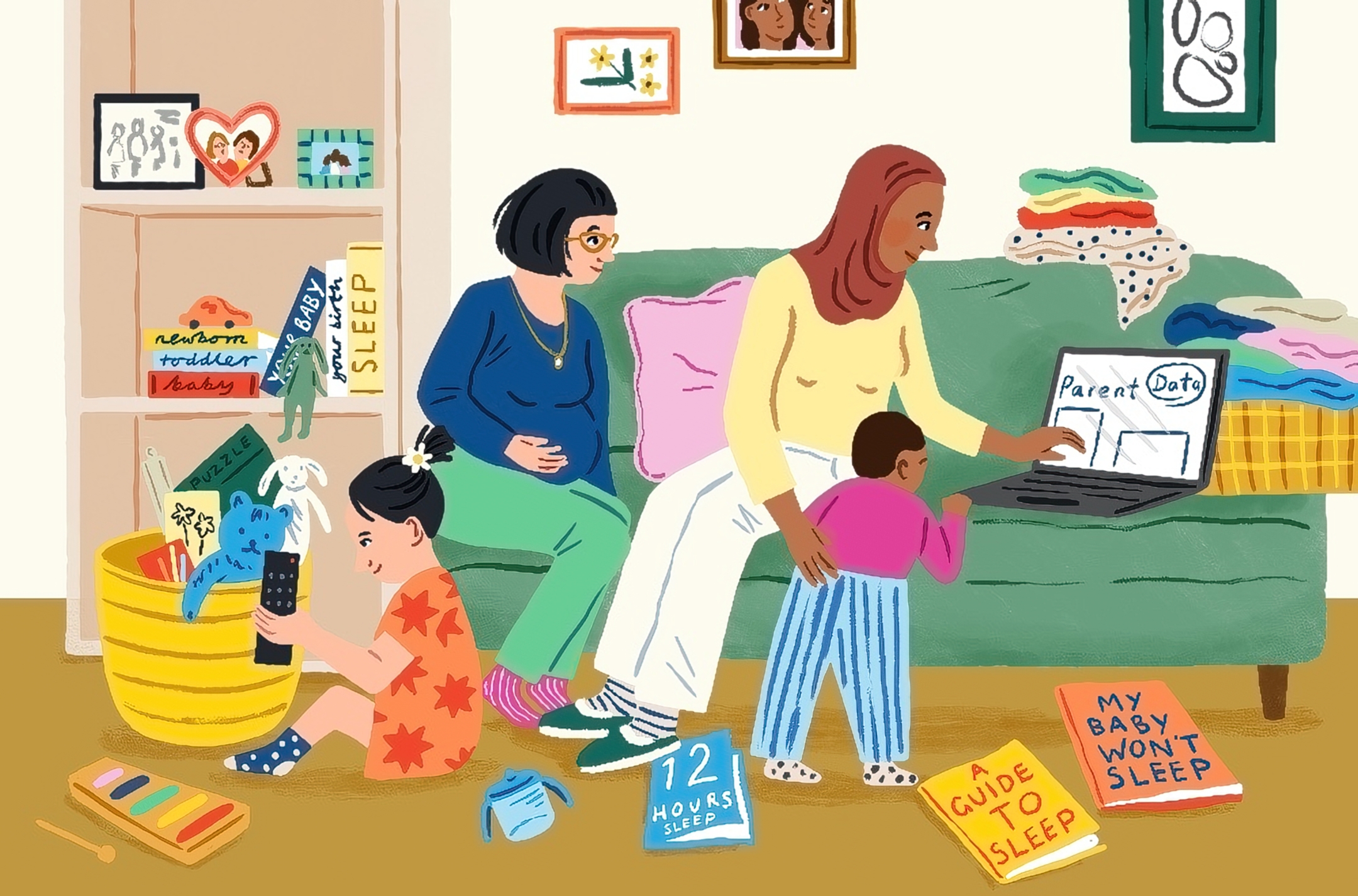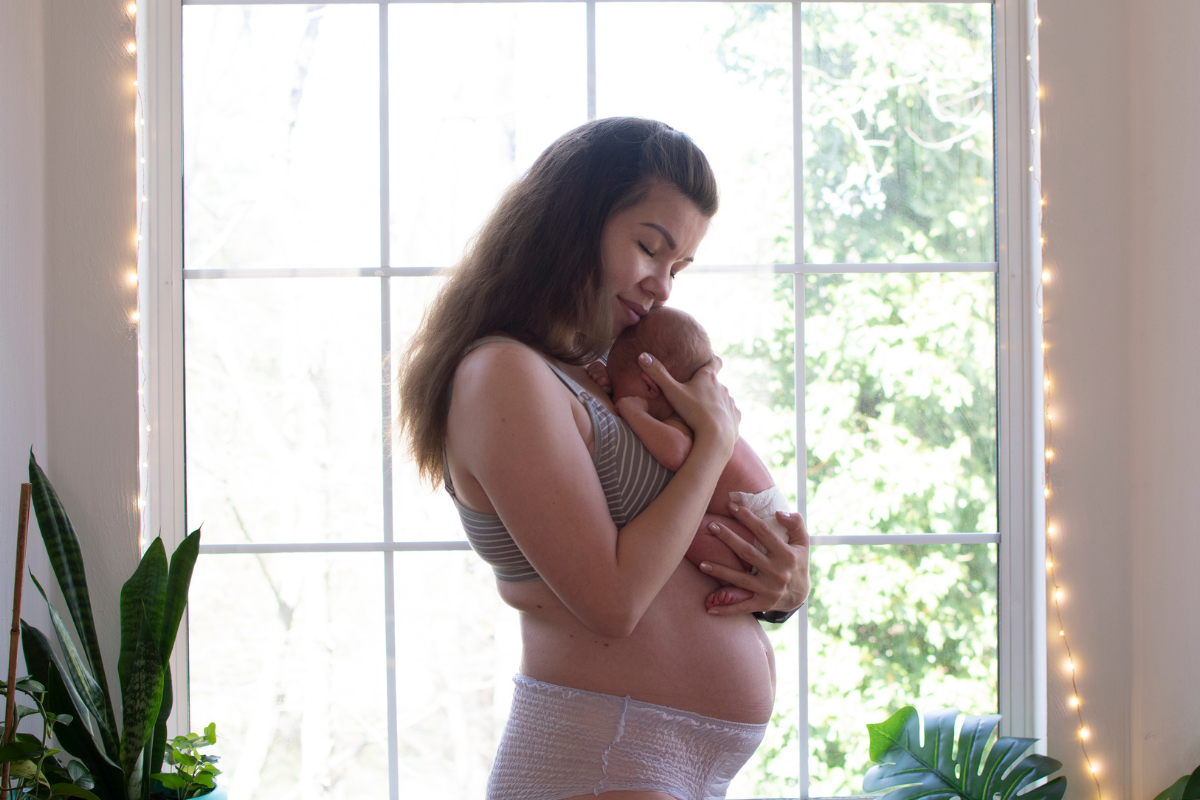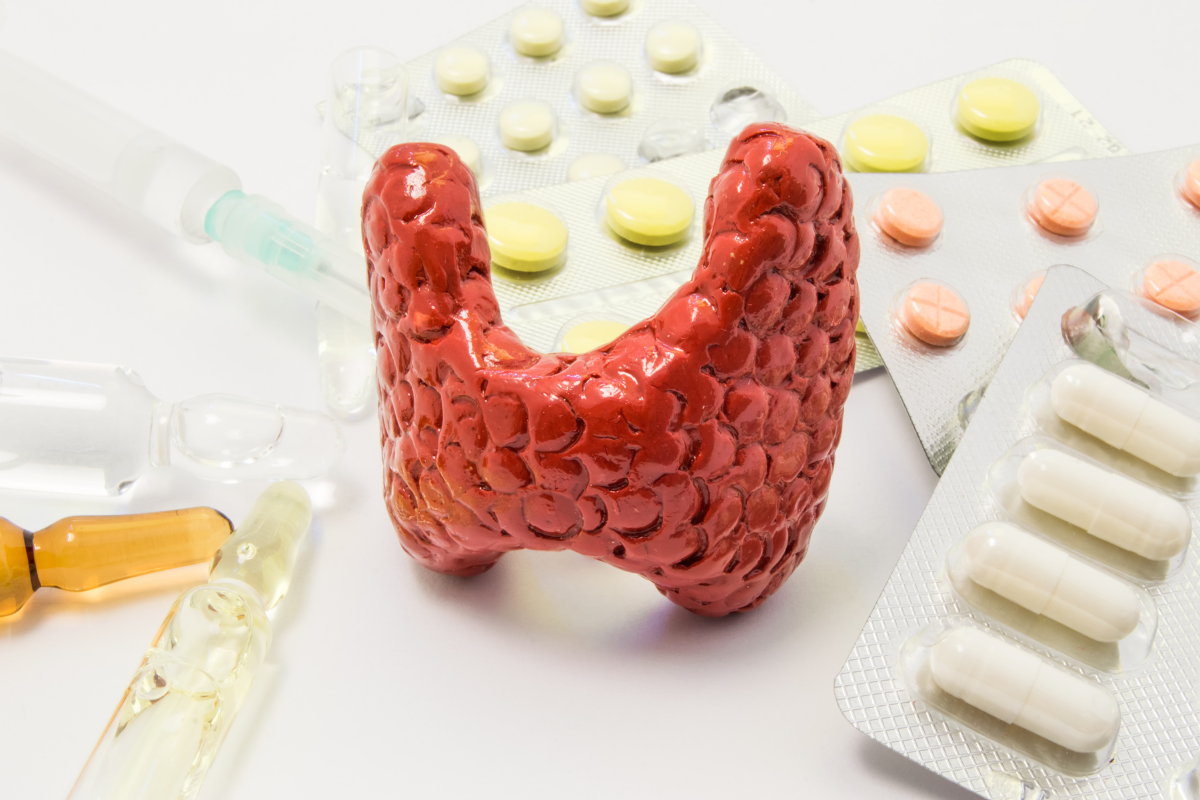For me, the first surprising thing about postpartum was the fact that I still looked pregnant. To be clear: I wasn’t expecting to leave the hospital looking like my pre-pregnancy self, but the fact that I still looked exactly like I did six months pregnant was a surprise. The second surprising thing was the night sweats, which lasted for months.
The guidance around what to expect postpartum is often cursory. You’ll hear some information on bleeding and when to be concerned (“blood clots larger than your fist”), and if you’re breastfeeding, there is usually guidance about sore nipples (“improve the latch!”). But many postpartum symptoms aren’t discussed, and we are often left wondering, “Is this normal?”
To answer that question, I want to start with the big picture of why postpartum is such a dramatic period, and then get into some of the specifics.

Why do postpartum symptoms happen?
Broadly, we can think about postpartum symptoms as a result of two different things.
First: the physical changes and challenges associated with a vaginal birth or a C-section, depending on delivery mode. In either case, there is bleeding. There is likely wound recovery, even with a vaginal birth. In addition, your uterus shrinks, and the skin and muscles around it also tighten back up. Some postpartum symptoms (and reasons for concern) are due to these changes.
Second: hormonal changes. The hormonal changes after birth are enormous. Both estrogen and progesterone drop quickly, within hours after birth, when the placenta is delivered. Estrogen in particular plays a role in both physical and emotional symptoms. Your prolactin level rises, thyroid hormones may fluctuate, and oxytocin rises; basically, your hormones are in chaos, and that drives a lot of what we experience. Variations in these hormonal changes can, of course, lead to differences in experiences among people.
Symptoms that are an immediate cause for concern
In the next section, I will outline several common postpartum symptoms, including when they may warrant concern. But there are a few symptoms that should always be addressed by a doctor.
- Fever: A fever (temperature above 100.4) can be an indication of infection. Infections postpartum occur in an estimated 5 to 7% of deliveries and can be due to an external wound infection or internal issues. In the first several weeks postpartum, a fever should always warrant a call to your doctor.
- Foul-smelling vaginal discharge: This is also a symptom of infection and should prompt a call to your doctor.
- Persistent headache and blurred vision: These are symptoms of postpartum preeclampsia, which occurs in 0.3% to 0.5% of deliveries. This needs medical attention.
- Swelling on one leg or shortness of breath: This is a possible sign of a blood clot, which occurs in an estimated 0.2% of deliveries, nearly all within six weeks postpartum. It needs immediate attention.
Common postpartum symptoms
Cramping
- What is it? Sometimes referred to as “afterpains,” uterine cramping is the result of your uterus shrinking down to its pre-pregnancy size. To do so, it needs to contract, which is why some people experience them more intensely while breastfeeding. Those contractions are influenced by oxytocin, which is released at higher levels when you nurse. This cramping can be quite painful, although generally not at the level of labor contractions.
- How long does it last? Uterine cramping is common in the first days, up to a week, after birth. It tends to be worse in the first two days.
- What can you do about it? Over-the-counter pain medications can be used to treat this pain.
- When should you be concerned? If cramping persists for longer than a week or if new cramping starts, it is something to discuss with your doctor, as it could indicate a retained placenta or other underlying issues.
Bleeding (lochia)
- What is it? After birth — regardless of whether you’ve had a vaginal or a cesarean delivery — you will have vaginal discharge and bleeding, called lochia.
- How long does it last? This bleeding will be heavy at first. In the first few days postpartum, you may pass fairly large clots; this is when you want to be aware of anything larger than a fist. Over the next days and weeks, the bleeding will become progressively less, moving toward something more like a heavy menstrual period and then like a lighter menstrual period. The total length of postpartum bleeding varies across people. In one review of many studies, the average length of active bleeding was 24 to 36 days, but the minimum was two and the maximum 90.
- What can you do about it? There is nothing to do about bleeding other than making sure you have a good supply of pads on hand.
- When should you be concerned? Bleeding that is very heavy (soaking more than one pad per hour) is a cause for concern, as are any blood clots larger than a fist. Generally, bleeding should decline over time after birth, so if it starts more heavily again, you should call your doctor, as this could reflect an issue like a retained placenta.
Breast and nipple pain
- What is it? If you are breastfeeding, you are likely to experience two symptoms. First, as your milk first comes in over the three to five days postpartum, breasts can become engorged, achy, and uncomfortable. Second, as you are frequently nursing, some nipple pain is very common. You will sometimes hear that if you have a good latch, you will not have nipple pain. Generally, this is not true; in one small study, 97% of breastfeeding women reported nipple pain two days postpartum.
- How long does it last? Milk supply is still adapting over the course of four to six weeks; during this period, some breast pain can occur if the supply is out of step with demand. Nipple pain resolves more quickly: the majority of the time, within 7 to 10 days postpartum.
- What can you do about it? Residual breast pain is usually due to an oversupply of milk. Cold compresses can help relieve this. Pumping a small amount of milk can also help, although it can make the problem worse by signaling to your body to produce more milk, so you want to pump only a small amount. Unfortunately, there is little evidence-based guidance on nipple pain; a review concluded that gels and creams generally do nothing. If nipple pain is interfering with breastfeeding, nipple shields can be a temporary help.
- When should you be concerned? Breast pain can be a sign of infection, in particular, mastitis. If you have a red painful lump, or if pain is concentrated in one location, and especially if you have a fever, you should call a doctor, as you may need antibiotics.
Sweating
- What is it? Sweating is common postpartum, especially at night, because of the dramatic drop in estrogen and progesterone. (This is the same reason these symptoms are common during perimenopause and menopause.) These hormones play a role in regulating your body temperature, and when they drop dramatically, your body goes a little off the rails. Sweating is an alternative way to keep your body cool — without the hormones to help, sweat is the answer. An estimated 30% of women experience this symptom.
- How long does it last? Data suggests that sweating declines slowly over the first year.
- What can you do about it? Unfortunately, there’s really not much you can do. I’d recommend sleeping with a towel next to your bed.
- When should you be concerned? There isn’t a reason to be concerned here, although if you are an older parent, a continued period of night sweats could signal the onset of perimenopause.
Hair loss
- What is it? Postpartum is when you’ll start losing your hair. The reason for this is the flip of the reason your hair looks so nice during pregnancy: hair falls out much less during pregnancy, and then there is more of it to lose postpartum.
- How long does it last? Hair shedding typically starts two to five months after birth and lasts three to six months. It can result in an appearance of thinning hair, a receding hairline, and, of course, hair in the shower. The hair does grow back, typically in another six to nine months.
- What can you do about it? There is not much evidence on what limits this hair shedding; the best you can do is probably just wait.
- When should you be concerned? Although frustrating, this isn’t a particularly concerning symptom.
“Baby Blues”
- What is it? The dramatic drop in estrogen right after delivery leaves many people extremely emotional in the first week or two postpartum. Small things, an especially well-done UPS commercial, for example, can leave you in tears. People often call this the “baby blues.” These can alternate with very high highs — the other side of the emotional coin.
- How long does it last? Baby blues brought on by this immediate change in estrogen should resolve within a couple of weeks as hormones stabilize. However, more serious mental health issues may arise at this time or even later.
- What can you do about it? The short-term emotional periods that I’m talking about here resolve on their own and often do not need treatment. But any continued mental health issues — depression, anxiety — do need treatment. The best way to stay on top of this is with continual attention to it; there is more on that in this post, along with a depression/anxiety screen.
- When should you be concerned? Mental health after birth can be complicated to navigate, and what constitutes concern may vary person to person. The bottom line: Don’t hesitate to reach out to your doctor and/or your support network if you feel like you’re struggling.





















Log in
This post is missing insomnia? Probably difficult to study because sleeplessness can be very much baby-related. But for me, it was clearly hormonal because the baby slept through the night but I could sleep only about 4 hours without meds (and about 6 with meds). So incredibly frustrating and also problematic because my spouse ended up with postnatal depression. Not sure if it would have helped if he hadn’t woken up with the baby every morning while I tried to sleep. Estrogen gel helped a little but mostly it was sleep meds (that were quite restricted while breastfeeding). The problem resolved quickly after starting to reduce and ending breastfeeding.
I had PP insomnia that turned out to be due to low folate. Who knew? I had never heard of this before.